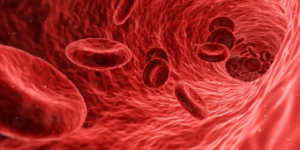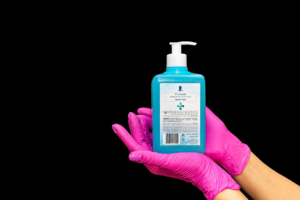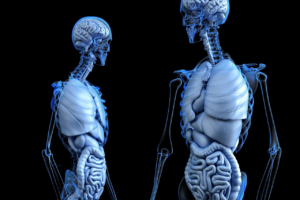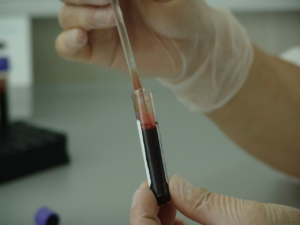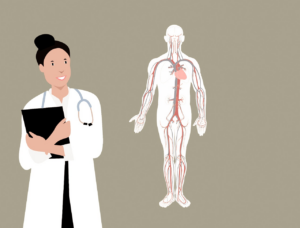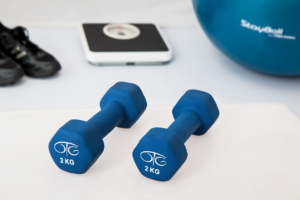Are you considering pursuing a career in nursing? If so, you may be aware of the St. Paul School of Nursing, a respected institution that has been training nurses for over a century. As part of the application process, you will need to take the St. Paul School of Nursing Entrance Exam, a comprehensive test that assesses your skills and knowledge in math, science, and reading comprehension.
In this article, we will provide you with a comprehensive review of the St. Paul School of Nursing Entrance Exam, including tips for preparing for the exam, a breakdown of each section, and test day tips to help you perform your best.
Whether you are a seasoned test-taker or feeling anxious about the exam, this guide will provide you with the information you need to succeed and take the next step in your nursing career.
Key Takeaways
- The St. Paul School of Nursing entrance exam is a comprehensive test assessing math, science, and reading comprehension skills and knowledge, and is a crucial step in the application process.
- Review material and practice answering questions in a timed setting for success, and study resources such as textbooks, online courses, and study groups can be utilized for preparation.
- Time management strategies are crucial for balancing studying with other responsibilities, and creating a study schedule, setting realistic goals, and prioritizing tasks can help manage time effectively.
- Familiarizing with exam format and science concepts, brushing up on basic math skills and problem-solving strategies, and understanding scientific concepts and principles are all important for success on the exam.
Overview of the St. Paul School of Nursing Entrance Exam
If you’re hoping to get into the St. Paul School of Nursing, it’s important to understand the structure and content of the entrance exam. The St. Paul School of Nursing Entrance Exam is an important step in the application process, as it’s designed to assess your knowledge and skills in areas such as reading comprehension, math, and science. The exam is a comprehensive review of the subjects you need to know to succeed in nursing school.
The St. Paul School of Nursing Entrance Exam: An Overview will give you an idea of what to expect on test day. The exam consists of multiple-choice questions, and the format and structure are similar to other standardized tests. You will have a set amount of time to complete each section, and the exam is typically broken down into different subject areas.
To succeed on the exam, it’s important to review the material covered on the exam and practice answering questions in a timed setting.
Tips for Preparing for the Exam
To prepare for the St. Paul School of Nursing Entrance Exam, you should consider utilizing study resources such as textbooks, online courses, and study groups.
Time management strategies are also crucial, as you’ll need to balance studying with other responsibilities.
Practice tests and self-assessment can help you identify areas where you need to improve and build your confidence for the actual exam.
Study resources
There are plenty of study resources available for the St. Paul School of Nursing entrance exam, and you should take advantage of them to maximize your chances of success.
One option is to enroll in an online course that’s specifically designed to prepare you for the exam. These courses typically include instructional videos, practice questions, and other study materials that can help you master the content and format of the exam. Some courses even offer one-on-one tutoring or study groups, which can be particularly helpful if you struggle with certain concepts or need extra motivation to stay on track.
Another study resource that you should consider is a study group. This can be a great way to connect with other students who are also preparing for the exam, as you can share tips, ask questions, and study together. You can form a study group with friends or classmates, or you can join an online study group through social media or other online forums.
Just be sure to stay focused and on task during your study sessions, and don’t let socializing distract you from your goals. With the right study resources and a commitment to hard work, you can ace the St. Paul School of Nursing entrance exam and start your journey toward a rewarding career in healthcare.
Time management strategies
Maximize your chances of success on the St. Paul School of Nursing entrance exam by implementing effective time management strategies. With the demands of daily life, it can be challenging to find time to study. However, with effective techniques, you can balance your studies with other responsibilities and improve your chances of success.
Here are some benefits of time management that can help you ace the exam:
- Increased productivity: With a clear plan and schedule, you can accomplish more in less time.
- Reduced stress: Procrastination and cramming can cause unnecessary stress. By managing your time effectively, you can avoid last-minute panic and reduce anxiety.
To effectively manage your time, start by creating a study schedule that fits your lifestyle. Consider your work schedule, family commitments, and other obligations. Use a planner or digital calendar to map out your daily tasks and allocate specific study times.
Additionally, set realistic goals and prioritize tasks based on their importance. By doing so, you can make the most out of your study sessions and achieve your desired outcomes.
Practice tests and self-assessment
Ready to test your knowledge and assess your understanding of the material? Try taking practice tests and conducting self-assessments to prepare for success on exam day.
Practice techniques like timed exams, flashcards, and review quizzes can help familiarize you with the test format, identify areas of strength and weakness, and improve your confidence in your abilities.
Additionally, self-assessments can help you manage exam anxiety by giving you a sense of control over your preparation. As you work through practice materials, take note of the topics that challenge you the most and invest extra time and effort into those areas.
Be sure to also take breaks and practice self-care to maintain a clear and focused mind. With practice and self-assessment, you can approach the St. Paul School of Nursing Entrance Exam with a sense of readiness and confidence.
Math Section of the Exam
Don’t stress about the math section of the St. Paul School of Nursing entrance exam – with some practice, you’ll be ready to ace it! Here are some tips to help you prepare for the mathematical concepts and problem-solving strategies that will be tested:
-
Brush up on basic math skills. Review arithmetic operations, fractions, decimals, and percentages. These concepts are the foundation for more complex math problems.
-
Learn problem-solving strategies. Familiarize yourself with different problem-solving techniques, such as identifying key information, breaking down problems into smaller parts, and using logic and reasoning to solve problems.
-
Practice with sample problems. The more practice problems you solve, the more comfortable you’ll be with the material. Use practice tests and study guides to help you prepare.
-
Don’t forget to manage your time. The math section of the exam is timed, so it’s important to work efficiently. If you get stuck on a problem, move on to the next one and come back to it later. Don’t waste too much time on any single problem.
Science Section of the Exam
So, you’re gearing up to take the Science section of the St. Paul School of Nursing entrance exam. Here’s what you need to know:
First, familiarize yourself with the types of science questions you’ll encounter on the test.
Next, make sure you have a solid understanding of key science concepts such as chemistry, biology, and anatomy.
Finally, when approaching science passages, focus on understanding the main idea and key details, and don’t get bogged down in technical jargon.
Good luck!
Types of science questions
You’ll encounter different types of science questions on the St. Paul School of Nursing entrance exam. These questions will mostly be in the form of multiple choice or true/false questions. Multiple choice questions will require you to choose the best answer from a list of options, while true/false questions will require you to determine whether a statement is true or false.
It’s important to note that the exam may also include scientific diagrams or illustrations, which you’ll need to analyze and interpret to answer the questions correctly. Some questions may also require you to perform calculations or solve problems using scientific formulas.
It’s crucial to have a good understanding of scientific concepts and principles to do well on this section of the exam. So, make sure to brush up on your science knowledge and practice answering different types of science questions to be well-prepared for the St. Paul School of Nursing entrance exam.
Key science concepts to understand
Now that you’ve got a good understanding of the different types of science questions you may encounter on the St. Paul School of Nursing entrance exam, it’s time to delve deeper into the key science concepts you should be familiar with. These concepts are essential to your success on the exam as they form the basis of many of the questions you’ll be asked.
To help you prepare for the exam, here are some important topics and concepts to focus on:
- Basic chemistry, including atomic structure and chemical reactions
- Cell biology, including cell structure, function, and division
- Anatomy and physiology, including the major organ systems of the body
- Microbiology, including bacteria and viruses
- Genetics, including inheritance patterns and genetic disorders
In addition to understanding these key topics, it’s also important to be familiar with the format of the exam itself. The St. Paul School of Nursing entrance exam is typically a computer-based test that’s divided into multiple sections, including a science section. The science section may include a mix of multiple-choice and short-answer questions and may cover a variety of scientific topics.
Familiarizing yourself with the exam format and key science concepts can help you feel more confident and prepared when you sit down to take the test.
How to approach science passages
As you read through the science passages on the St. Paul School of Nursing entrance exam, it’s important to approach them with a scientific mindset. Imagine yourself as a scientist conducting experiments and making observations in order to fully grasp the concepts presented.
This means analyzing information and looking for patterns and connections between different pieces of data. Don’t just read the passages passively; actively engage with the material and try to understand the logic behind each experiment and observation.
When approaching science passages, it’s also helpful to take notes and sketch out diagrams or graphs to visualize the information presented. This can help you better understand complex concepts and see how different variables affect the outcomes of experiments.
Look for key terms and phrases that indicate important information, such as ’cause and effect,’ ‘dependent variable,’ and ‘controlled experiment.’ By analyzing this information and thinking critically about the experiments presented, you’ll be better equipped to answer the questions that follow each passage.
Reading Comprehension Section of the Exam
To effectively tackle the Reading Comprehension section, it’s crucial that you have a solid understanding of the main idea and supporting details within a given passage. This section of the St. Paul School of Nursing Entrance Exam is designed to test your ability to comprehend and analyze information presented in a written format.
Here are some reading strategies that can help you navigate through this section with ease:
- Skim the passage first: This helps you get an overall idea of what the passage is about and what the author is trying to convey.
- Read the questions before reading the passage: This gives you a purpose for reading and helps you identify important information as you read.
- Circle or underline key words: This helps you focus on the information that is most relevant to the questions and prevents you from getting distracted by other details.
- Take notes: Jotting down key points or summarizing each paragraph in your own words can help you better remember the information and answer questions more efficiently.
Test anxiety can make it difficult to focus and retain information during the Reading Comprehension section of the exam. However, by using these strategies and practicing them beforehand, you can increase your confidence and improve your chances of success.
Remember to take deep breaths, stay calm, and approach each passage with a positive attitude.
Test Day Tips
You’ll love these test day tips that’ll help you stay calm and confident during the exam!
First and foremost, it’s important to address any test anxiety you may have. Take a few deep breaths and remind yourself that you’ve prepared for this moment. Visualize yourself successfully completing the exam and receiving a passing score. Additionally, try some relaxation techniques such as progressive muscle relaxation or meditation to calm your nerves.
Another helpful tip is to arrive at the testing center early. This will give you time to check in, get settled, and mentally prepare for the exam. Make sure to bring all necessary materials such as identification and a calculator if allowed.
During the exam, read each question carefully and don’t rush. If you get stuck on a question, move on and come back to it later. Remember, you’ve got this!
Frequently Asked Questions
Are there any prerequisites or educational requirements needed before taking the St. Paul School of Nursing Entrance Exam?
Before taking the St. Paul School of Nursing entrance exam, there are certain educational requirements and prerequisites that you should meet. You must have a high school diploma or equivalent, and some nursing programs may require college-level coursework in anatomy, physiology, and microbiology.
The exam format typically consists of multiple-choice questions, and the number of questions can vary depending on the program. It’s important to review the exam content and format beforehand so that you can prepare accordingly.
By meeting the educational requirements and preparing adequately for the exam, you can increase your chances of success and pave the way for a career in nursing.
How long is the exam and how many questions are included in each section?
The exam format for the St. Paul School of Nursing Entrance Exam includes multiple choice questions that cover a range of subjects such as math, science, and English.
The exam typically takes a few hours to complete and is divided into different sections. The scoring system is based on the number of correct answers and there’s no penalty for incorrect responses.
Each section has a specific number of questions, usually around 50-60, and the total number of questions can vary depending on the version of the exam.
It’s important to prepare thoroughly for the exam in order to achieve a high score and increase your chances of being accepted into the nursing program.
Can the exam be taken online or is it only offered in person?
You might be wondering whether the St. Paul School of Nursing Entrance Exam can be taken online or if it’s only offered in person.
Well, the good news is that the exam is available online, so you can take it from the comfort of your own home. However, it’s important to note that the exam format is the same whether you take it online or in person, so you’ll need to be prepared for timed sections and multiple-choice questions.
Make sure you have a reliable internet connection and a quiet place to take the exam, and don’t forget to review the exam format before you begin.
Is there a limit on the number of times the exam can be taken?
When it comes to the St. Paul School of Nursing Entrance Exam, there are some limitations when it comes to retakes. While there is no set limit on the number of times you can take the exam, there are requirements when it comes to passing scores. If you don’t meet these requirements, you’ll need to retake the exam until you do.
However, it’s important to note that there may be a limit on how many times you can take the exam within a certain period of time. So while you have the opportunity to retake the exam, it’s important to prepare thoroughly and aim to pass on your first try.
How long does it typically take to receive exam results and what is the process for receiving them?
When you take an exam, you’re always eager to know how you performed. The timeline for receiving exam results can vary depending on the institution, but typically it takes a few weeks to a month.
The process for receiving exam results can also differ depending on the institution. Some institutions may send out results through email or mail, while others may require you to pick them up in person. It’s important to check with the institution to determine their specific process for receiving exam results.
Conclusion
Congratulations, you’ve completed a comprehensive review of the St. Paul School of Nursing entrance exam!
By now, you should have a good understanding of what to expect on test day and how to prepare for the exam.
Remember, the key to success is to start preparing early and be consistent with your study habits. Focus on improving your math and science skills, as well as your reading comprehension abilities.
Utilize study materials such as practice tests, review books, and online resources to help you prepare.
On test day, be sure to arrive early, bring all necessary materials, and stay calm and focused.
With these tips in mind, you’ll be well on your way to acing the St. Paul School of Nursing entrance exam and pursuing your dream of becoming a nurse.














































